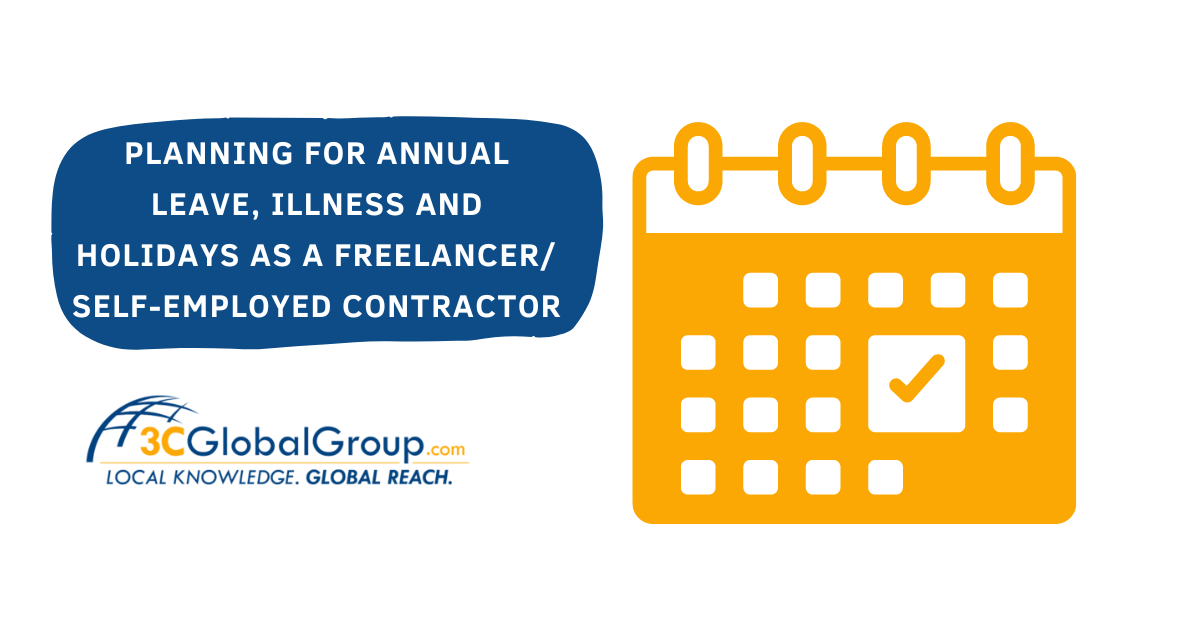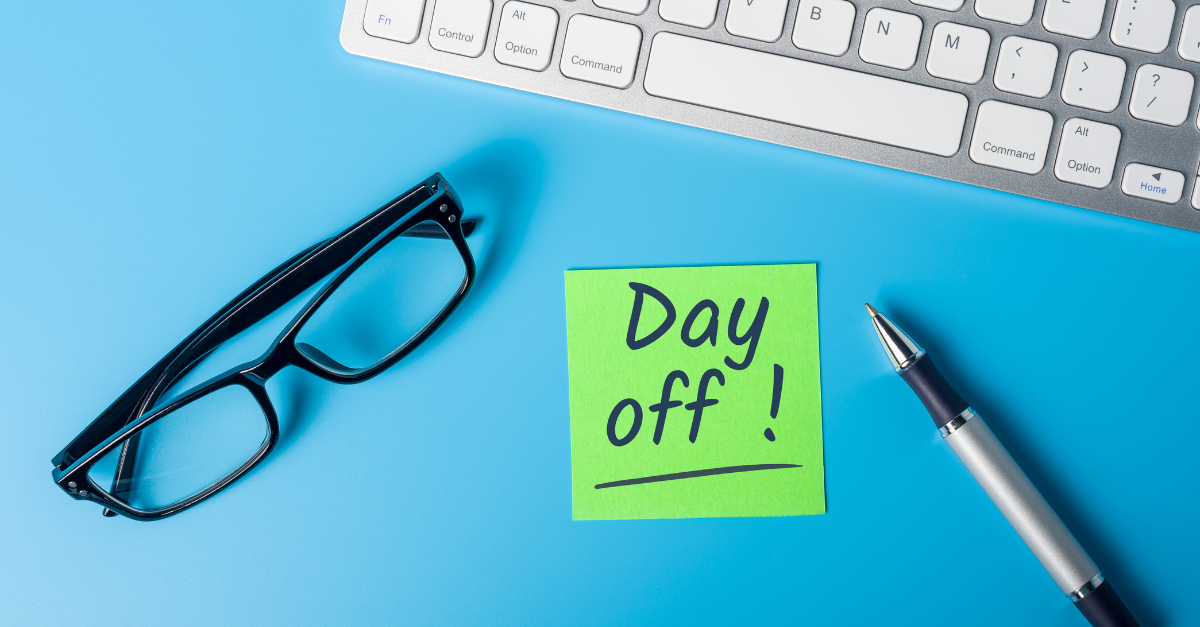
How to plan for Annual Leave, Illness and Holidays as a Self-Employed Contractor
Freelancing/ working as a self-employed contractor has many benefits, from flexible working hours to working from anywhere worldwide. However, self-employed contractors and freelancers face some challenges regarding time off work for holidays, sick leave and other annual leave-related purposes. Studies such as the recent Irish census data have shown that self-employed professionals often work more hours than their full-time peers. Freelancers and other self-employed professionals must take time off to avoid burnout. Not only will taking time off help you relax and avoid burning out, but it can also help boost your creativity and overall well-being. This piece examines how contractors and freelance professionals can best plan for annual leave, sick days and holidays.
How to determine your Annual Leave needs:
Self-employed contractors should consider public and bank holidays when setting their daily rates.
Freelance professionals should plan in advance the appropriate annual leave requirements for a particular year. One should look at the paid time off requirements of the country they are living in. For example, in some EU countries such as the Netherlands, Ireland and Germany, full-time employees are entitled to a minimum of 20 days annual leave per annum; in Sweden & Denmark, this number is 25, and in Spain, it is 23.
Planning for illness and unforeseen circumstances:
Almost everyone falls ill at some point in the year, whether it is the flu, a stomach bug, dental issues, migraines or other emergencies.
It is essential to allow a small number of days so that you can recover and recuperate.
Many European companies allow between 3 and 5 days a year for employees under the weather.
One must also ensure they make allowances for unforeseen circumstances such as grievance leave by considering it in one's daily rate and setting aside a fund until a time that it may be required.

Important Considerations:
Self-employed contractors and freelancers must consider their industry when taking time off for a holiday. One should look at when in the year they are the least busy or the slower season. Freelance professionals could also look at when their client plans to take time off and coordinate it around the same time. Also, self-employed contractors with young children may want to plan their holidays around school holidays. If you are a contractor living in France, you may want to take off time in August if all your clients are doing the same. Another time that may work well for self-employed contractors is the period after completing one contract and before beginning one's next contract. Also, be sure to check out our blog piece on maintaining a positive outlook between contracting jobs.
How to calculate your daily rate to account for leave:
A guide for self-employed contractors and freelancers to calculate their daily rate to account for their annual leave needs. Decide your base daily rate. Calculate the number of public holidays and annual leave you wish to take. Multiply this figure by your daily rate. Then, calculate the number of days you plan to work in the year and divide the leave figure by that number. Then, add the new figure to your base daily rate. Don't hesitate to contact us today for advice regarding calculating your adjusted rate!
Prepare for time off:
One should prepare in advance for taking time off
- You should notify any relevant contacts or clients
- Set up an out-of-office email
- Prepare for anything that could go wrong.
- Highlight any upcoming deadlines
- Streamline your social media activity with automation tools.
As the famous saying goes, fail to prepare and prepare to fail. Self-employed contractors should ensure they contact relevant clients and contacts to inform them that they will be out of the office for the specified time. They should follow this up by ensuring they have an out-of-office email while away from work and automating & scheduling social media activities if applicable. It is also crucial to highlight upcoming deadlines in advance of one's time off. Highlighting upcoming deadlines is essential to ensure that all important tasks are completed on time and delivered to the relevant parties. Finally, sometimes Muphy's Law does manifest itself, and the things you hope will not go wrong will go wrong. To minimise the adverse effects of something going wrong, self-employed contractors and freelance professionals should prepare solutions for the eventuality of these events.
Does this apply to Employed Contractors?
Some employed contractors may be entitled to leave; however, it depends on various factors, such as the country, employment agreement, contract and much more. Don't hesitate to contact our team today to learn more about what you are entitled to under your contract as an employed contractor.
In Conclusion:
Self-employed contractors and freelance professionals must consider the leave they may take from work during the year in their daily rate. By allocating a set number of days for holidays, freelance professionals will be more likely to take them and, therefore, escape the potential of suffering from burnout and positively impacting their well-being. It is also a good practice to help ensure one is covered in the case of illness or unforeseen circumstances.
If you want to learn more about professional freelancing or need assistance with your self-employed contracting queries, please do not hesitate to contact our knowledgeable team at 3C Global today!


